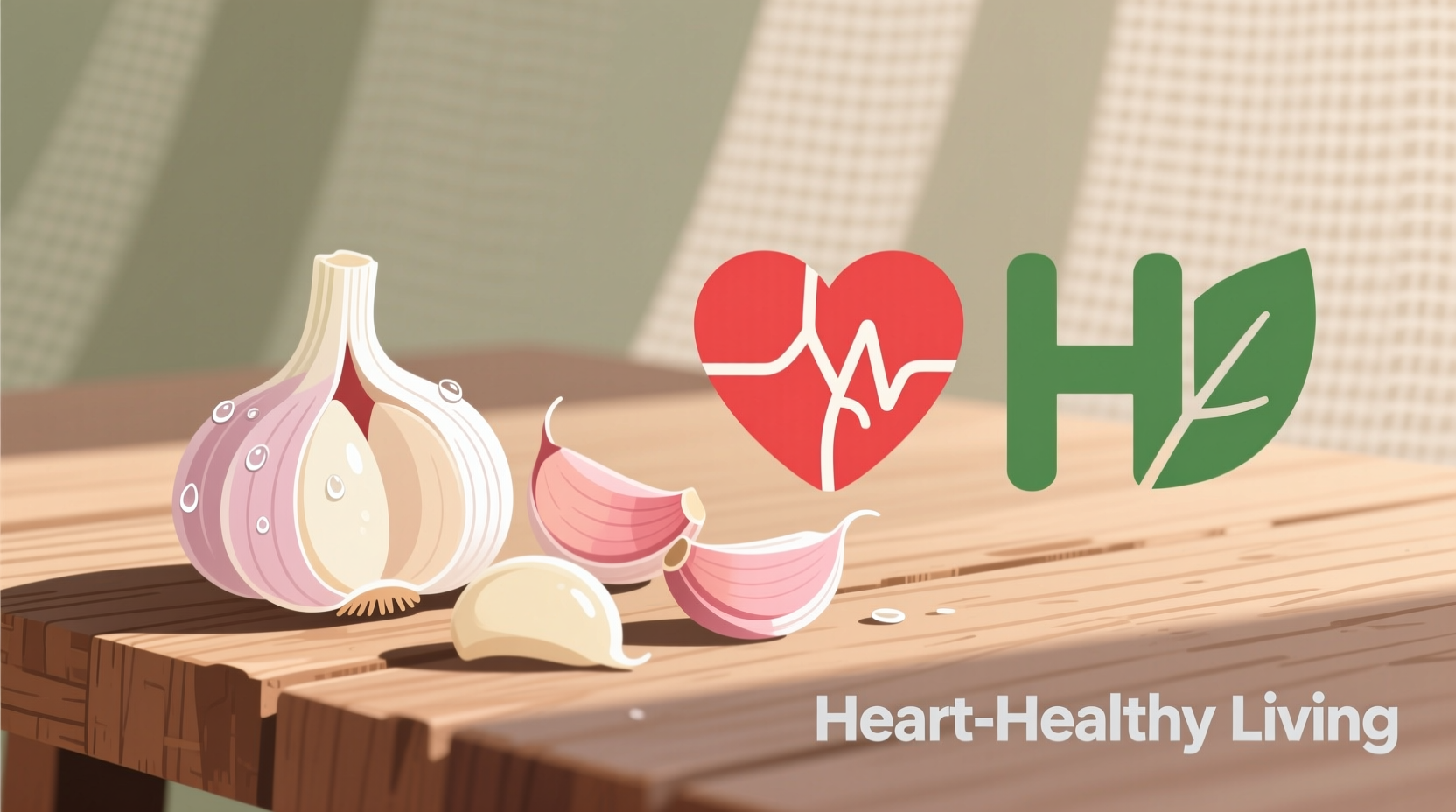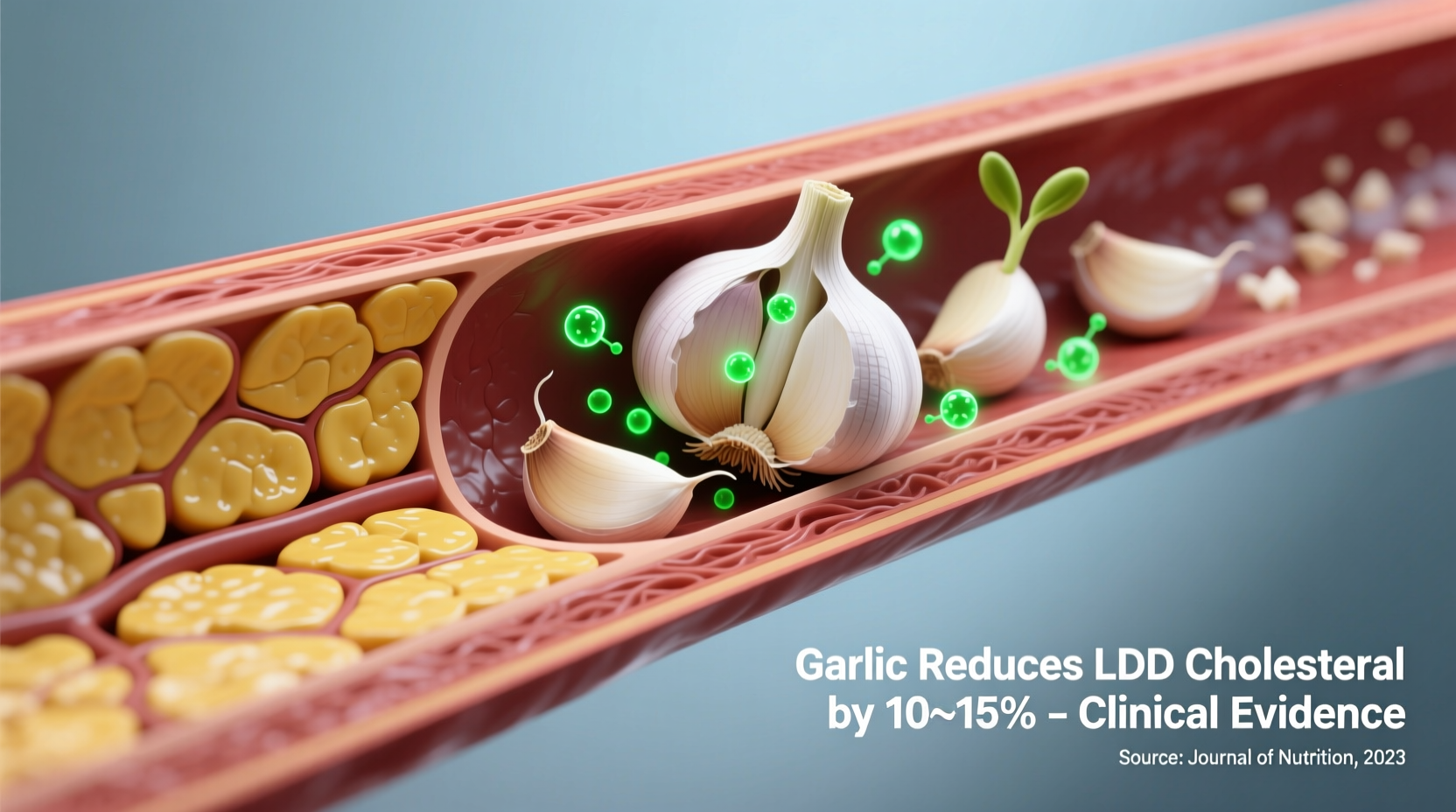Millions search for natural ways to manage cholesterol levels, and garlic frequently emerges as a promising option rooted in both traditional medicine and modern research. Understanding exactly how garlic affects cholesterol—and what the science really says—can help you make informed decisions about incorporating this kitchen staple into your heart health strategy.
The Active Components Behind Garlic's Potential Benefits
When you crush or chop fresh garlic, an enzyme called alliinase converts alliin into allicin—the compound responsible for garlic's distinctive smell and many of its biological effects. Allicin quickly breaks down into other organosulfur compounds like diallyl disulfide and S-allyl cysteine, which appear to influence cholesterol metabolism through several mechanisms:
- Inhibiting cholesterol synthesis in the liver by affecting HMG-CoA reductase activity
- Reducing oxidative stress that contributes to atherosclerosis
- Modulating inflammatory pathways associated with cardiovascular disease
However, the effectiveness varies significantly depending on garlic preparation. Raw garlic contains the precursors needed to form allicin, but cooking destroys the alliinase enzyme. Aged garlic extract undergoes a different biochemical process that creates stable compounds like S-allyl cysteine with better bioavailability.
What Clinical Evidence Actually Shows
After reviewing multiple meta-analyses published in reputable medical journals, researchers have established a clearer picture of garlic's cholesterol effects. The most comprehensive analysis comes from a 2020 systematic review in Experimental and Therapeutic Medicine that examined 39 randomized controlled trials involving over 2,300 participants.
| Garlic Form | Average Cholesterol Reduction | Timeframe for Results | Research Consistency |
|---|---|---|---|
| Raw garlic (1-2 cloves daily) | 4-7% total cholesterol | 8-12 weeks | Moderate |
| Aged garlic extract (600-1,200mg) | 7-10% total cholesterol | 8-16 weeks | High |
| Garlic powder supplements | 3-6% total cholesterol | 12+ weeks | Low-Moderate |
| Garlic oil | Minimal effect | Inconsistent | Low |
This evidence aligns with findings from the National Center for Complementary and Integrative Health (NCCIH), which states that "some studies suggest aged garlic extract might modestly lower total cholesterol and LDL ("bad") cholesterol in people with slightly elevated levels." The American Heart Association acknowledges garlic's potential but emphasizes it shouldn't replace proven cholesterol-lowering medications when medically indicated.

Realistic Expectations: How Garlic Fits Into Cholesterol Management
Understanding garlic's actual impact prevents unrealistic expectations. The cholesterol reduction from garlic—typically 5-10%—is significantly less than what statin medications achieve (25-50% reduction). However, for individuals with borderline high cholesterol or those seeking complementary approaches, garlic can be a valuable component of a comprehensive strategy.
Consider these practical guidelines based on current evidence:
- Effective dosage: 600-1,200mg of aged garlic extract daily, or 1-2 fresh cloves (crushed and allowed to sit for 10 minutes before use)
- Timeframe: Minimum 8 weeks of consistent use before evaluating effects
- Best timing: Take with meals to reduce gastrointestinal side effects
- Monitoring: Get cholesterol tested before starting and after 12 weeks
Important Limitations and Safety Considerations
Garlic's blood-thinning properties require special attention. If you take anticoagulant medications like warfarin, consult your physician before significantly increasing garlic intake. The same caution applies before surgical procedures. Common side effects include bad breath, body odor, heartburn, and digestive upset—particularly with raw garlic consumption.
Research shows garlic works best as part of a comprehensive approach. The Portfolio Diet study published in The American Journal of Clinical Nutrition demonstrated that combining garlic with other cholesterol-lowering foods (like nuts, soy protein, and plant sterols) produced significantly better results than any single intervention.
Practical Integration Into Your Daily Routine
Instead of viewing garlic as a standalone solution, incorporate it strategically within evidence-based heart health practices:
- Start with aged garlic extract: More consistent results with fewer side effects than raw garlic
- Pair with healthy fats: Combine garlic with olive oil to enhance absorption of its fat-soluble compounds
- Time your consumption: Take garlic supplements with your largest meal of the day
- Combine with other heart-healthy foods: Include oats, fatty fish, and leafy greens in your diet
- Maintain realistic expectations: Track other lifestyle factors like exercise and stress management
Remember that individual responses vary significantly. Some people experience notable improvements in cholesterol markers with garlic supplementation, while others see minimal effects—likely due to genetic differences in how we metabolize these compounds.
When to Consult Your Healthcare Provider
While garlic is generally safe as a food ingredient, therapeutic use for cholesterol management warrants professional guidance if:
- Your total cholesterol exceeds 240 mg/dL
- You have existing cardiovascular disease
- You're taking blood thinners or HIV medications
- You're scheduled for surgery within two weeks
- You experience persistent digestive issues
Your healthcare provider can help determine whether garlic supplementation complements your overall treatment plan or if more aggressive intervention is needed based on your complete cardiovascular risk profile.











 浙公网安备
33010002000092号
浙公网安备
33010002000092号 浙B2-20120091-4
浙B2-20120091-4